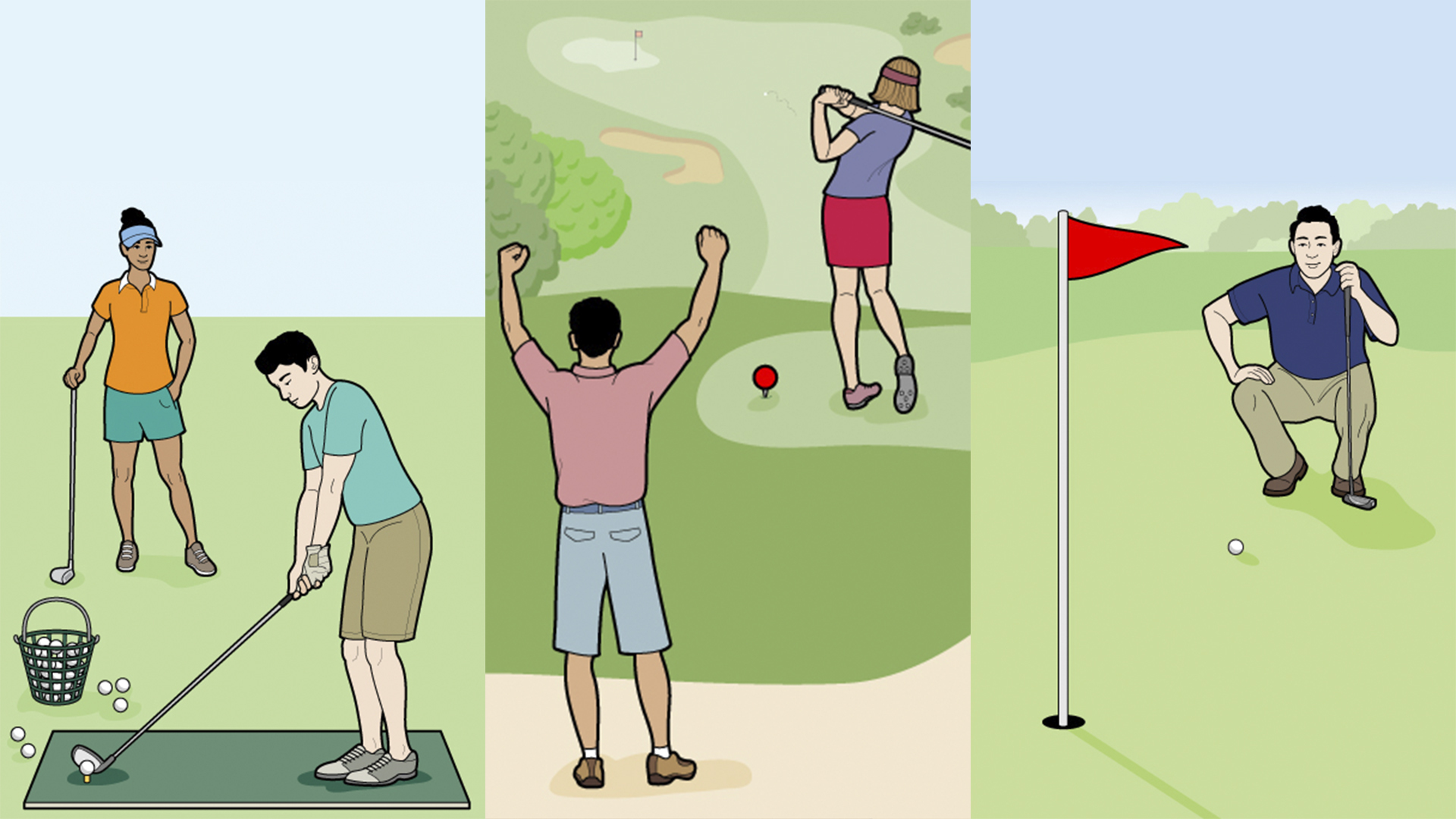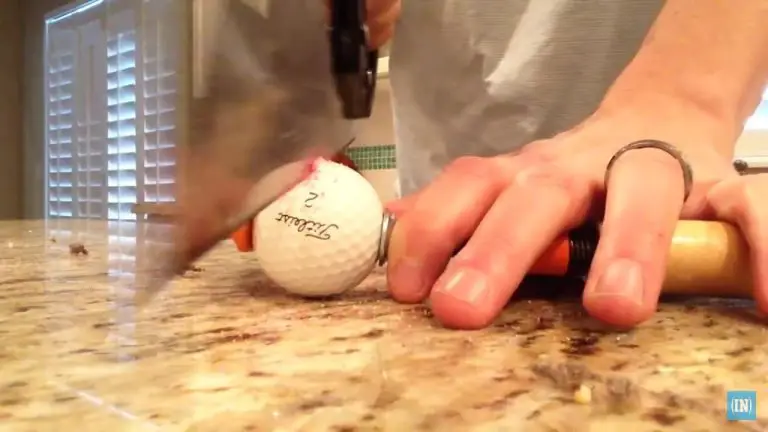How To Tee Off In Golf For Beginners

Welcome to the fascinating world of golf, where every hole begins with an exhilarating tee shot. If you’re a beginner looking to navigate the complexities of tee shots, you’ve come to the right place. Teeing off in golf is not just about launching the ball down the fairway; it’s about precision, strategy, and setting the stage for a successful hole.
In this comprehensive guide, we will walk you through the fundamentals of teeing off in golf, providing you with the knowledge and techniques necessary to tackle this critical aspect of the game with confidence. From understanding the basics of tee shots to mastering the art of club selection, stance, and execution, we’ve got you covered.
Teeing off may seem daunting at first, but rest assured, with practice and guidance, you’ll soon be teeing off like a pro. Whether you’re a complete novice or have a bit of experience, this guide is designed to help you develop a solid foundation for your golf game.
So, grab your clubs, step onto the teeing ground, and get ready to unleash your inner golfer. Let’s dive into the world of tee shots and embark on an exciting journey of learning, improvement, and sheer enjoyment on the golf course.

Understanding the Basics of Teeing Off
What is Teeing Off in Golf?
Teeing off is the act of taking your first shot on a golf hole. It is performed from an area called the teeing ground, which is specifically designated for tee shots. The tee shot sets the stage for the rest of the hole and can significantly impact your overall score.
The Teeing Ground
The teeing ground is the starting point of each hole. It is marked by tee markers that indicate where you can place your ball for the tee shot. Understanding the teeing ground and its characteristics is crucial for a successful tee shot.
Tee Box Selection
Choosing the appropriate tee box is important, especially for beginners. Tee boxes are usually color-coded to indicate different levels of difficulty or distance. It’s essential to select a tee box that suits your skill level and allows you to comfortably reach the fairway without excessive challenge.
Preparing for a Successful Tee Shot
Before stepping up to the tee, it’s essential to prepare yourself for a successful tee shot. This involves proper club selection, setting up your stance, and addressing the ball correctly.
Club Selection for Teeing Off
Choosing the right club for tee shots depends on various factors such as the distance to the target, the layout of the hole, and your personal preferences. Let’s explore the different clubs commonly used for tee shots.
Drivers
Drivers, also known as 1-woods, are designed for maximum distance off the tee. They have larger clubheads and longer shafts, allowing for more power and distance. Drivers are typically used on longer holes with wider fairways.
Fairway Woods
Fairway woods, such as 3-woods and 5-woods, offer a balance between distance and accuracy. They are suitable for tee shots on par-4 and par-5 holes, providing a combination of distance and control.
Hybrids
Hybrids are versatile clubs that blend the characteristics of irons and fairway woods. They are excellent options for beginners, offering forgiveness and ease of use for tee shots.
Setting Up for the Tee Shot
Proper setup is crucial to execute a successful tee shot. It involves alignment, stance, and addressing the ball correctly. Let’s dive into the key elements of setting up for a tee shot.
Alignment and Stance
Aligning your body correctly to the target and adopting a proper stance are vital for consistent tee shots. Stand parallel to the target line, with your feet shoulder-width apart. Position yourself to have a slight tilt towards your trailing foot, ensuring balance and stability throughout the swing.
Addressing the Ball
Addressing the ball involves positioning it correctly on the tee and aligning the clubface. Place the ball on the tee at a height that allows you to make solid contact with the center of the clubface. The optimal tee height may vary depending on the club you’re using and your personal preferences.
Executing the Tee Shot
With the proper setup in place, it’s time to execute the tee shot. This involves mastering the golf swing and making solid contact with the ball. Let’s explore the key aspects of a successful tee shot.
The Golf Swing for Tee Shots
The golf swing is a complex and coordinated movement. While each golfer may have a slightly different swing, there are fundamental principles that apply to tee shots. Let’s break down the components of a successful golf swing, there are fundamental principles that apply to tee shots. Let’s break down the components of a successful golf swing for tee shots.
Fundamentals of a Successful Swing
A successful golf swing involves a combination of body rotation, arm movement, and weight transfer. Focus on maintaining a smooth tempo, shifting your weight from the backswing to the downswing, and maintaining balance throughout the swing.
Initiating the Backswing
The backswing sets the foundation for a powerful tee shot. Start by turning your shoulders away from the target, allowing your arms to swing naturally. Maintain a connected and synchronized movement between your upper body and lower body.
Striking the Ball
Making solid contact with the ball is crucial for distance and accuracy off the tee. Let’s explore key considerations when striking the ball during a tee shot.
Impact and Ball Positioning
Achieving the correct impact position is vital for maximizing distance and controlling the ball flight. Ensure that you make contact with the ball on the upswing, just after the clubhead has bottomed out. Position the ball slightly forward in your stance, towards your front foot, to optimize impact.
Follow-through and Finish
Completing your swing with a smooth follow-through and maintaining balance is essential for consistent tee shots. Allow your body to rotate naturally, and extend your arms toward the target. Maintain a balanced finish position, with your weight transferred to your front foot.
Troubleshooting and Tips for Beginners
As a beginner, it’s common to encounter challenges while teeing off. Let’s address some common mistakes and provide tips to overcome them, along with strategies to enhance your tee shot performance.
Common Mistakes and How to Avoid Them
Even with proper technique, beginners may face common mistakes that affect their tee shots. Here are a few errors and tips to help you avoid them:
Slice and Hook
A slice occurs when the ball curves excessively to the right (for right-handed golfers) or left (for left-handed golfers). A hook, on the other hand, results in the ball curving significantly to the left (right-handed golfers) or right (left-handed golfers). These ball flights can lead to inaccuracy and reduced distance.
To correct a slice or hook, focus on proper grip, alignment, and swing path. Seek feedback from experienced golfers or consider taking lessons to refine your swing and overcome these common mistakes.
Topping and Sky Ball
Topping the ball or hitting sky balls refers to making contact with the upper half of the ball, resulting in low-flying shots or even shots that go straight up in the air. These mishits typically lack distance and accuracy.
To avoid topping or hitting sky balls, pay attention to your setup and ball position. Ensure that you maintain a steady head position and strike the ball with a descending blow. Practice your swing with focus on making clean contact with the center of the ball.
Strategies for Beginners
Developing effective strategies for tee shots can greatly enhance your overall game. Here are a few strategies to consider as a beginner:
Tee Shot Strategy
Consider the layout and hazards of each hole when planning your tee shot strategy. Aim for areas of the fairway that provide a favorable approach to the green. Avoid hazards such as bunkers and water hazards whenever possible.
Mental Approach and Confidence Building
Golf is as much a mental game as it is a physical one. Develop a positive mindset and visualize successful tee shots. Build confidence by practicing regularly and acknowledging your progress. Focus on the process rather than the outcome, and trust your abilities on the tee.
Practice Drills for Tee Shots
To improve your tee shots, consistent practice is essential. Here are some practice drills you can incorporate into your training routine:
Off-Course Tee Shot Practice
- Utilize driving ranges for tee shot practice. Focus on different clubs, targets, and shot shapes to simulate on-course scenarios.
- Practice tee shots in your backyard or designated practice area using training aids such as alignment sticks or impact bags. This allows you to work on your swing mechanics and consistency.
On-Course Tee Shot Practice
- Incorporate tee shot practice during non-peak times on the course. Focus on specific holes or play multiple tee shots to different targets on the same hole.
- Take advantage of par-3 courses to practice tee shots in a more relaxed and forgiving environment.
By dedicating time to practice and incorporating these drills, you’ll gradually improve your tee shots and gain confidence on the course.
Conclusion
Teeing off in golf is an exciting and essential aspect of the game. As a beginner, developing proper technique, understanding club selection, and practicing consistently will help you achieve successful tee shots. Remember to focus on alignment, ball positioning, and executing a smooth swing. With time and practice, you’ll gain confidence and enjoy the rewards of hitting solid tee shots. So head to the teeing ground, embrace the challenge, and tee off with enthusiasm on your golfing journey!





